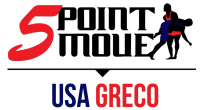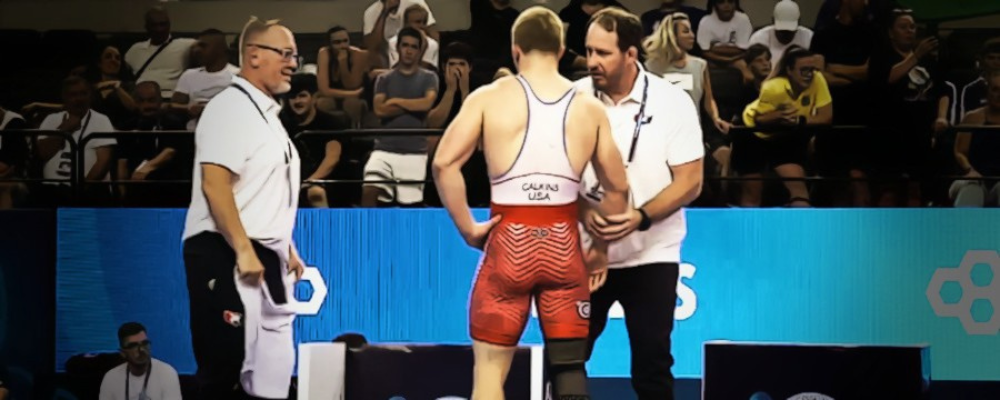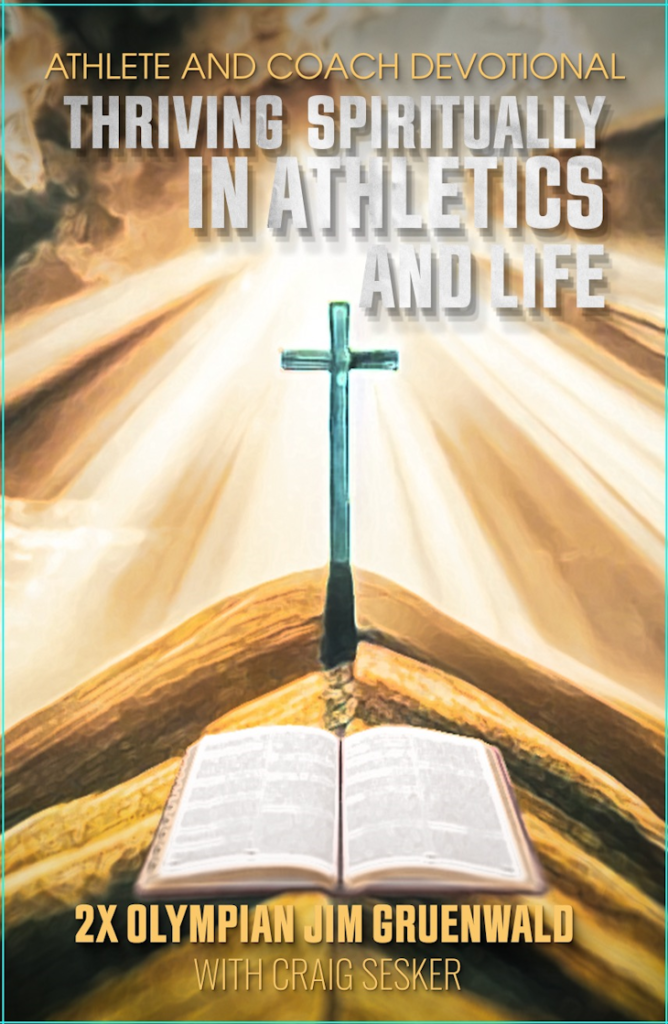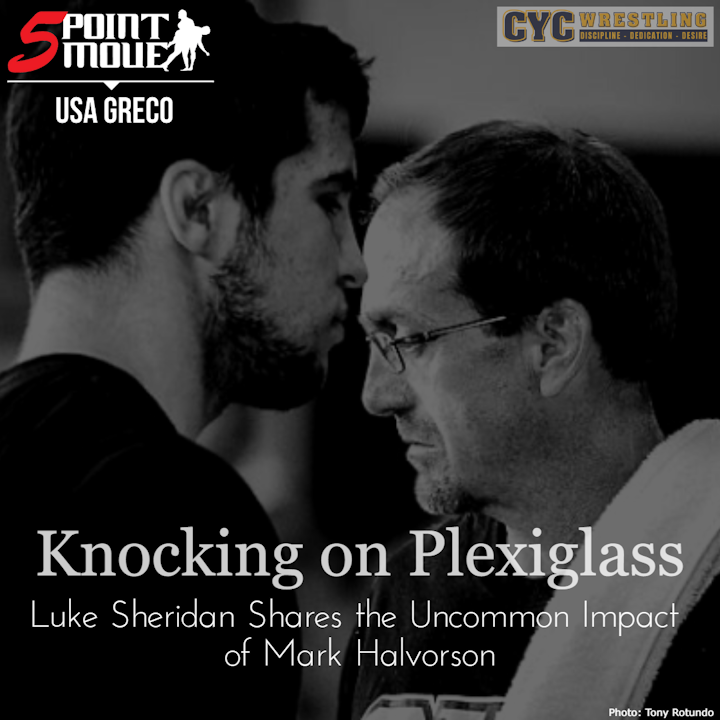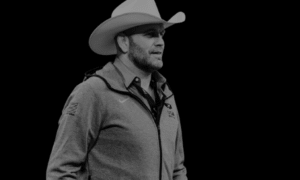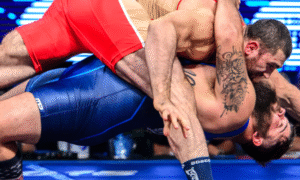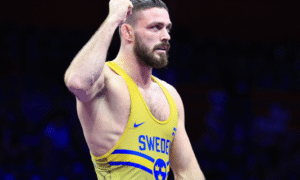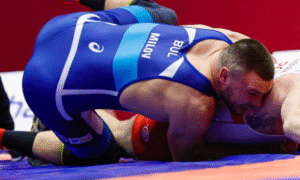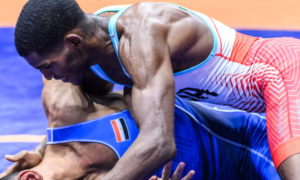To understand the immense value of the coach and the institution to which he is attached, there first is a required statement one must firmly grasp: the Community Youth Center in Concord, California is beholden to a legacy that stands apart from most wrestling clubs in the United States. Once you, the reader, can shake hands with the fact that CYC was and very much still is one of the only pillars keeping Greco-Roman wrestling in America from tumbling into the sea, then, indeed, shall you realize how mission-critical is its importance.
While an exact percentage is difficult to uncover, perception dictates that likely somewhere around 99% of all age-group wrestling facilities in the US focus on folkstyle, with a mere few months out of the year devoted to the international disciplines. That is not the case at CYC, nor has it ever been. Although the club (which is a non-profit entity) does, certainly, feature folkstyle as part of its curriculum, Greco-Roman tactics and techniques are not relegated to the back-burner. Quite the opposite. CYC athletes have no choice but to absorb Greco principles year-round (even during scholastic season), primarily because said principles serve as the cornerstone of the club’s existence.
Founded by two-time USA Olympic coach Bill Martell (who also authored the aptly-titled book Greco-Roman Wrestling, a canonical work for devotees of the style), CYC was on the cutting-edge of age-group international development during an era when such an endeavor was practically unheard of. From Martell the torch was passed to the late Mark Halvorson, who, like his predecessor, coached all three wrestling styles but specialized in Greco-Roman. Halvorson focused on more than training and developing standout athletes, however. He was also grooming standout successors for what has blossomed into an impressive — and now more than ever, vital — coaching tree.
Halvorson — whom himself was on an Olympic coaching staff in 2016 — ushered scores of high schoolers to elite success while simultaneously doing the same for young Greco-Roman practitioners who would go on to compete at the sport’s highest levels. Olympian Robby Smith, National champ Luke Sheridan (97 kg, Army/WCAP), ’19 Junior World bronze Peyton Omania (67 kg, NYAC), and Riley Briggs (77 kg, NMU/NTS), for example, all came of age under Halvorson. Smith is, of course, the most recognizable name of the bunch, and also the most difficult to miss given his sizable personality. He is now the head assistant coach at the place where for him it all began and, unsurprisingly, is thriving in his role.
But the head guy at CYC, a man who in his own right enjoyed a terrific on-the-mat career, is perhaps not as well-known. You might gather that Stevie Gee has preferred it that way. Sure — stud in high school, competed in college, was formidable in Greco… But compared to some of the other names mentioned, Gee, until only recently, had been a man in the shadows. Those in and around CYC and the general Cali wrestling scene are and have been familiar with Gee; but unlike his boy Smith, he is not what one might describe as overt. Doesn’t quite market himself. Not really. He has a fabulous Instagram moniker (@we_throw_here), but that’s just because he is clever. Gee is a little less comfortable with selling himself, a departure from the lion’s share of wrestling coaches in this era who operate on the periphery of the digital space. Rather, he is much more in his wheelhouse when embroiled in substantive discussions surrounding the verifiable in’s and out’s of the sport to which he devotes the majority of his waking hours.
And when he isn’t speaking, he listens. And listens some more. He is used to it. Can’t learn if you don’t listen; and since Halvorson urged his charges to keep their ears open and to “trust the process”, Gee cannot help but abide by that doctrine all these years later. This is why the pairing of Gee and Smith has produced a seamless transition for CYC following Halvorson’s passing four-and-a-half years ago. Whereas Smith emotively expresses and expounds upon lessons gleaned from the duo’s mentor, Gee more stoically reminds and orchestrates. Smith could be likened to waves crashing, and Gee is the current directing the water.
But there is starting to be a change. Gee’s own profile is rising. Reasons exist for it. One is that CYC has continued to develop top talents who have performed locally, nationally, and internationally, particularly with David Calkins Jr. recently earning bronze at the U17 World Championships. In concert with that was Gee’s presence as a coach on the U17 World staff. He had coached before on overseas trips, but the whole gig is different when we’re talking about a World tournament. Also, the climate of the National program plays a role, at least from a developmental standpoint. Cheney Haight, who is tasked with overseeing such concerns on the part of USA Wrestling, has begun to foster a purpose-driven environment that is, finally, allowing for legitimate input and collaboration involving the most knowledgeable and trusted age-group coaches in the country, of which Gee is one.
This very well could, and should, lead to more opportunities for Gee personally and professionally. It is time for actual, credible coaches to become empowered and have louder voices pertaining to the style’s growth and development. Gee has the credibility, his volume is increasing, and more people are listening. CYC’s legacy is alive and well because the coaches who made the place special knew how to reach athletes both inside and outside of the club’s four walls. This is the position in which Gee now finds himself and he is ready to embrace all that it entails.
5PM Interview with Stevie Gee
5PM: How do you marry Halvorson’s influence on you with your own coaching style?
Stevie Gee: Coach and I did a lot of things together. I mean, he had a lot of ideas, but he would also always ask about stuff. And I was fortunate enough to learn from not just him, but Coach (Bill) Martell, as well. I took a lot from him while he was coaching at the CYC. I took a lot of the things that he did, his ideas and ways of doing things, and I sprinkled that in with how Coach Halvorson was doing stuff and meshed it into my own coaching style. I took what worked and made adjustments on those things which I thought could work differently.
That is how I have approached it and, hopefully, it seems to be working. You can’t ever be someone like Coach Halvorson. You cannot replicate that, so it is really about learning from him and trying to continue that with what we were doing at both the CYC and the (De La Salle) high school.
5PM: What was it like in 2021 as far as stepping in and re-asserting CYC in the wake of Halvorson’s passing?
SG: Before he passed, it was during COVID and the lockdown stuff in California was pretty strict. We had high school guys who he was working with at CYC. I wasn’t coaching at CYC at the time, I was helping out the high school team. So, I would come in a couple of times a week and work with one cohort, which I think is the terminology they used for a group of kids. I was just coming in and working with that group. After he passed, it was like, Okay, well, we’ve got to keep these kids training. That was the first thing. Like, How are they doing? I wasn’t even thinking about who was going to take over yet. Instead, it was, How can we keep these kids wrestling, and get their minds off of what they just lost? That was the main focus first.
Then we had his services and everyone came out for it. Robby, the Sheridans — all of us — and we were sitting around talking about what needed to be done and who was going to do it. Robby and I were the only ones who had the ability to do so. When the job opening came up, we both applied and I got the head job, whereas Robby came out a little bit later because he was still dealing with the medical issue that his son had. But the focus was on keeping the kids going, first, and then afterwards figuring out who was going to take over.
The last conversation I had with Coach before he left was about how he wanted Robby and I to take over. “That’s the dream,” he said, “to have you and Robby run this.” He ended up getting what he wanted (laughs). I mean, it wasn’t the way anyone wanted it to happen, but Coach got what he wanted, which tended to happen all the time.
5PM: How would you describe Greco’s influence on CYC’s overall curriculum?
SG: That’s kind of where it all started. It started with Greco. When I began here in 1995, Coach Martell and Floyd Winter were the coaches and they taught us wrestling. It wasn’t about a singular style. We learned wrestling. I remember that my first tournament was folkstyle and I was doing gutwrenches because I didn’t know any different (laughs). It was just what we did. He was also during that time running the Concord Cup, so we always had Senior athletes coming in and training. We got to be there and watch them practice. That was pretty cool. He ran the Olympic Trials in ’96 and I was there helping out with that. I mean, it started just with Greco. Then freestyle was added because you’re doing that at tournaments, anyway; and then the folkstyle kind of came around a little bit later. But as far as I can remember, that’s just what we did, which was Greco (laughs).
5PM: I know that CYC has seasonal programs, so how do you mesh Greco in when it isn’t age-group Greco season?
SG: We’re always doing arches, especially with the little kids. With our younger kids, we don’t really differentiate too much. We just teach them basics. I mean, we’ll teach them doubles, singles, and halfs, but we also work a lot on back-steps, arching, and we have a bunch of small dummies that we use for our youngest kids, from five to eight-years-old. We’ll teach them headlocks, we’ll teach them arm throws… We have them arch over each other and do all that kind of stuff. We start it pretty young. Even during folkstyle season… Like right now, we have our high school kids still doing back-steps and arches, two-on-ones and underhooks. The way we teach tilts, it’s a gutwrench. We’re using the same verbiage and the same positioning, it is just the hand placement that is a little bit different.
We still use the same ties on our feet with two-on-ones and underhooks, and then we adapt. So instead of just attacking the upper-body, now we have legs to attack, too. You can still get to your hips or to your drag, but you can also get to your singles, or your doubles. Now there is more that we can attack on our opponents. In that way, we kind of wrestle Greco all year long, except there are times when we let them also grab legs (laughs).
5PM: Publicly and privately, Robby has always cited you as a major influence on him. He would regularly mention you in interviews during his competitive days but he would also constantly talk about his relationship with you away from all that. What it is like coaching with him, especially considering that he is a more overt, out-in-front type of personality while you’re kind of the quiet one by comparison?
SG: I’ve known Robby since he started at CYC, which was a year or two after me. We kind of grew up training and traveling together. For example, we’d go to the Western Regionals in a van together with his dad driving. We have known each other for a long time and came up in the same system with Coach Halvorson and Coach Martell. His freshman year at Fargo was my senior year, so we roomed together and Coach Halvorson wanted me to keep an eye on him to make sure that Robby didn’t do the wrong things — not that he ever did. It was more just about helping him out.
We understand the philosophy that we have and were taught, and we are trying to give those same experiences and same level of coaching that we had growing up to these kids. I’m not the loudest person, and Robby likes to put himself out there, so this contrast makes for a very good combination. I like to kind of stay in the back and not be the guy in front, but Robby is okay being that guy, so it has been good. I can kind of sit back and coach, and he can be himself. It’s a good mix.
5PM: The way I described you in the intro is that it’s like you’re a man in the shadows.
Stevie Gee: Well, it’s like you were saying, I helped Robby out a lot. For instance, going to the US Open, I was already going to coach, and Coach Halvorson was bringing a bunch of our guys. But Coach Halvorson was like, “Hey, Robby doesn’t have a partner, can you bring your stuff?” Yeah, I can bring my stuff. It’s not a problem. So, I’d bring my stuff and warm up with Robby. It was just about trying to help him out. He didn’t have anyone and I wanted to be there for him. Same thing in Vegas in 2015 (World Championships). He didn’t have a workout partner and I was already going to be there, so I brought my stuff and worked out with him.
It has always been this way. We take care of each other. That is something Coach Halvorson and Coach Martell wanted from us. We take care of our own. I was really close with Robby; Robby is really close with Luke; and Luke is really close with Peyton. We kind of have that person who we are always working with. I was close with Luke, too, but you have that big brother/little brother thing with the different generations through the program. It has been kind of special. We still try to incorporate that now with our club kids.
5PM: It’s interesting to hear you say this because many times have I have interviewed Robby, or Sheridan, or Peyton, and they have always mentioned the same mentorship chain.
SG: That’s just the way this was designed. Coach Halvorson was a genius, you know? He knew what he wanted and put everything in place. It was a lot of guys. It wasn’t just those whom we talked about. There were others who didn’t make it all the way to the Senior level. You always had a couple of guys who you were checking up on. Like, Hey, you going to this tournament? Or, Hey, are you making sure that you get your training in? It was kind of by design.
5PM: As a coach — and not just for CYC because you have traveled extensively, as well — what have you noticed about coaching in this era that is different compared to when you were still competing?
SG: I don’t think that you can be hard on the kids anymore. I mean, we’re still a little hard on them, but I remember getting off the mat sometimes when even though you won, you had still messed up. Coach Halvorson would always find something. You’d get a “good job”, but it would also be, You could have done ‘this’ or ‘that’, or, You should have done ‘this’ instead… That sort of thing. We were always chasing perfection. We wanted to be perfect. You never can be perfect in this sport, but you’d get close sometimes and it would still be, Well, you should have done this better. Like, You should have pinned him… There was always something that you could have done better. He wouldn’t always say that we did a great job or that he was proud, yet you just knew. But then it would also be, Yeah, you’re right, I could have done a little bit better, I could have done ‘this’ or ‘that’ better. He did not want us to become complacent.
Nowadays, kids aren’t the same. Some kids, you can kind of get on them, and some kids you have to treat with a kinder heart. And there are more phones, more cameras on you now, so you have to be more careful with what you say. Someone is always listening (laughs). I don’t think that was the case when I was competing.
5PM: Soon I will be setting up an interview with CYC alumnus Riley Briggs, who I see as tremendously underrated and yet it has been frustrating because he has also pursued a serious career in nursing while also still being competitive.
SG: Yeah.
5PM: Well, how do you see him? Because he came into NMU with a legitimate skill-set, and he can still express that skill-set when he’s on his game. He is so skilled and athletic, and obviously came in already equipped with a legit Greco background.
SG: Riley is a worker. He is a great kid, great wrestler, but he is having to balance his career path and sport, which is not an easy thing to do. Nursing is not a small commitment. When he was getting his degree, he had a lot of schooling to do while trying to find time to train and compete. It’s not easy. But he is definitely a great wrestler, a great competitor, and he has a high ceiling.
5PM: In your opinion, should there be a national curriculum for age-group development?
SG: I think there should be. We’re trying to get one for the state, at least. I know that USA Wrestling had put some stuff online. They have their little outline, but there should be some sort of national curriculum. I know that Cheney (Haight) has some ideas that he wants to deploy. I mean, he goes all over the place to teach. I think that he is doing a good job with getting the age-group Teams. His plan for the U17 World Team this year I thought was great. I don’t know how much he is working on this, but I think it would be a great idea if we had one. I don’t know who would be putting it together. It’d be great if we had one, but who is going to do it?
5PM: Would you imagine that as having been the result of a consortium of coaches providing input?
Stevie Gee: I know that we’re trying to put one together for the state because California has a lot of good wrestlers; but with our state being so big, it is hard to get everyone together for a camp. It is just too hard. We’re kind of in the middle of the state, so it is five hours north to Oregon but nine hours down to San Diego. It is hard to get everyone together before Fargo. Our camp is two days now and we’re trying to show everyone what they need to know, but we have to do better. We need to have multiple camps throughout the year — and this is just for the state. But on the national level, we should definitely have it. I think it is going to be hard to implement because you have to get the coaches on-board, you have to get the wrestlers, and Cheney has to do heck of a lot of traveling (laughs).
5PM: You were a coach on this year’s U17 World Team staff. You already knew Cheney before that, but then you became familiar with Jason Christenson, who mentioned you a lot in that latest piece I did on him. We discussed a similar topic of sorts, though it might have been worded differently, which was the idea of growing a network of coaches. How would you see this in conjunction with the prospect of a national curriculum?
SG: Robby and I have talked about doing clinics on a local and state level. The thing is, we are already so busy with coaching at the club and with our families that it is tough to set aside time for that. But — it is something that we have to start doing. We will answer any questions. I think that a good coach, especially Greco coaches, are built a little bit differently. For the most part, we are always open to having those conversations, showing people things, and talking about the sport because we are so passionate about it. It is just such a fun sport. What other sport is there in which you can beat someone up and get points for it? Doing more clinics and a video series, though those aren’t the same but at least it’s something. That would be a good place to start. Then it becomes about getting people to attend something like that. Is there enough interest? Would coaches want to go to a Greco-only clinic? That’s the big question, if it is marketable.
5PM: How would you explain to someone the challenges involved with training age-group competitors and trying to keep them as Senior-level athletes? What do you think the main disconnect is that people are missing?
SG: The pull towards folkstyle is a big hurdle that we have to overcome, but it is also just the knowledge. Traditional Greco-Roman wrestling is not just about avoiding leg attacks. There’s a lot more to it. The positions are a little bit different and how you move is a little bit different. This is why knowledge for coaches is very important. In order for the coaches to improve, they have to push themselves to learn, to go outside of their comfort zones.
But the pull to win a high school or NCAA championship is real. It is a big thing. If these kids do well in folkstyle, they might go to a big school. It’s college and money plays a role. So, you have to get the kids who are in it for the long haul. Kids who aren’t in it for the money but because they have dreams of becoming World and Olympic champions, which is not an easy thing to do. You are already fighting an uphill battle trying to achieve that; and with folkstyle and freestyle, it is like you have people throwing rocks at you while you’re going up the hill (laughs). That makes it a little more difficult (laughs).
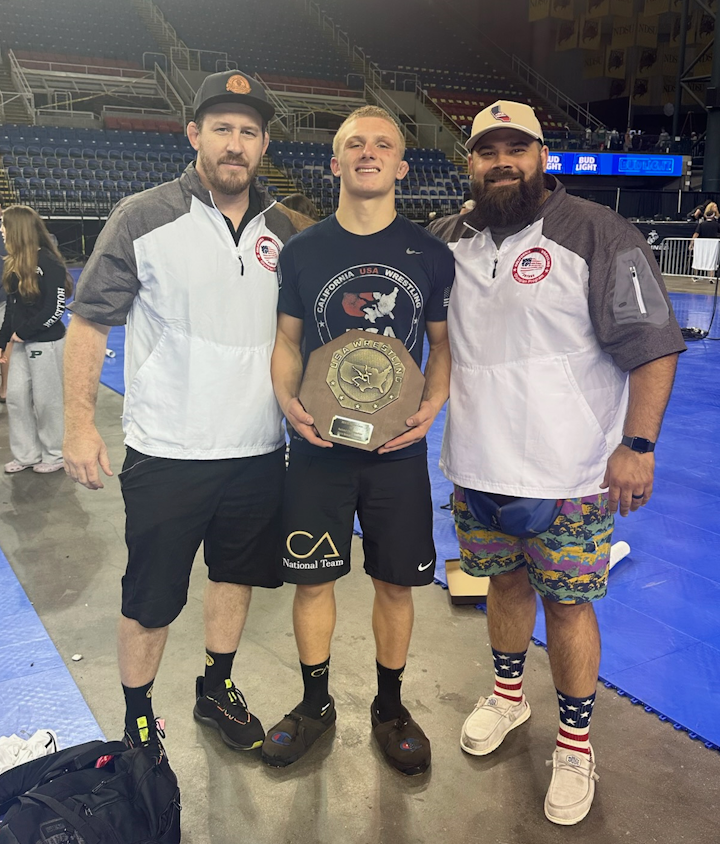
5PM: What was it like for you to coach at the U17 Worlds and have an athlete, David Calkins, come away with a medal?
SG: U17 Worlds was awesome. It was a busy summer. We had our first camp at Doane, and that was awesome. Coach Christenson did a great job with the setup and everything there. I think that he is going to do a great job at Doane. He has some good recruits coming in. I think that he is going to do a great job there. I had a lot of fun with him at the Worlds. Had a lot of fun with Cheney. They’re just good guys. We kind of have the same ideas and similar philosophies. Having one of our club kids there and him getting a medal was the icing on the cake. It was just awesome. We would have liked him to do a little bit better but he wrestled his butt off. We were hoping for a gold because we thought that he could he do it, but that World tournament is so hard. But him getting a medal? I don’t even know how to explain it. It’s awesome.
5PM: With the coaching tree from which you emanated, your having been a U17 World coach this year, and CYC’s legacy of producing athletes, do you have goals of continuing on to pursue more opportunities on World Team staffs, even perhaps up to the Senior level?
Stevie Gee: That is always the goal, to coach at the Worlds and the Olympics, and that kind of stuff. This was my first chance to coach at a World Championships, but I had taken kids overseas previously. In 2016, we took some kids over to the Black Diamond Cup in Hungary. Kamal (Bey) was there, Britton Holmes was there… This year, in January, we took some of our middle school kids over to Sweden. I want to do as much as I can. I think that I have a good amount of knowledge, I enjoy coaching, and I want to do it as much as I can and for as long as I can. So, if I can get on more trips as part of a staff, I would love that. And, hopefully we have more kids from our club going. We had Calkins this year at U17. We had Abbi Cooper this year on the U20 girls World Team and she just took 5th. Even just going with our athletes, that is something I’m looking forward to doing.

Listen to “5PM57: Kamal Bey and David Stepanyan” on Spreaker.
Listen to “5PM56: Rich Carlson and Spencer Woods” on Spreaker.
SUBSCRIBE TO THE FIVE POINT MOVE PODCAST
iTunes | Stitcher | Spreaker | Google Play Music
